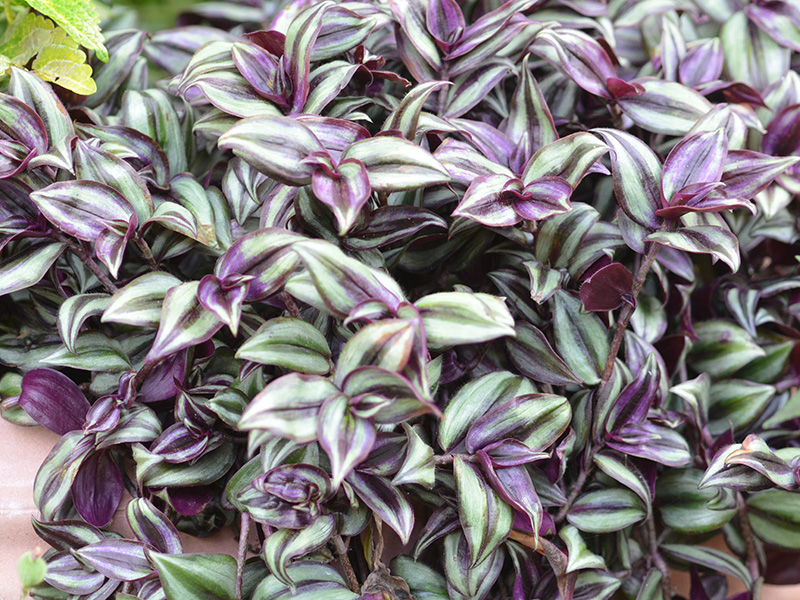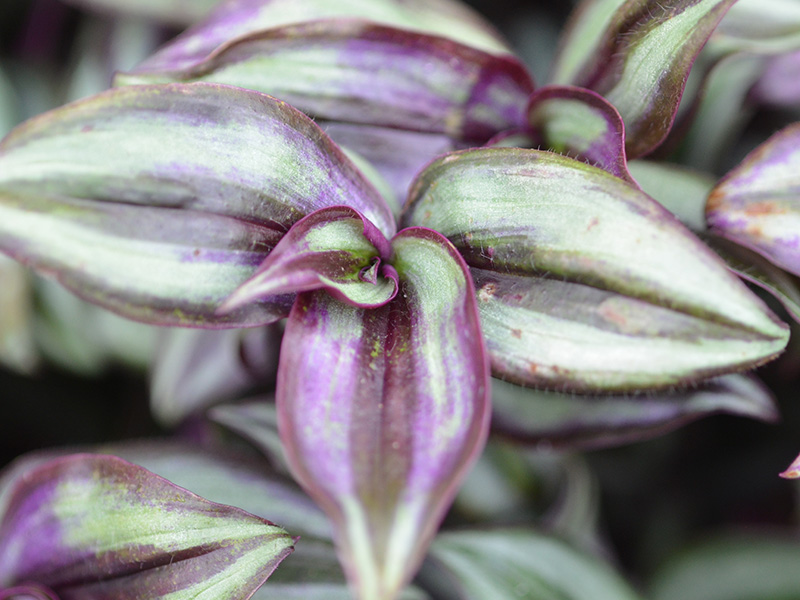
Annuals, Tropicals > Tradescantia > Tradescantia zebrina > Tradescantia zebrina
Tradescantia zebrina
Inch Plant, Wandering Jew
Origin: Gulf Coast region of eastern Mexico.
Mike's
Opinion


"
Tradescantia zebrina is one of my favourite plants because it's very hardy and can be used in so many different ways. It makes excellent groundcover, or it can be a pretty vine, climbing on a tree or trellis. It also makes a nice floral arrangement or houseplant. It is pretty even when it's not flowering, because of the striped, iridescent leaves. Also, it's very hard to kill, so even someone with no experience caring for plants can enjoy it. Once you have one, you can have many or even give new ones as gifts since propagation is very simple.
Michael Pascoe, NDP., ODH., CLT., MSc. (Plant Conservation)
"
| Family |
| Commelinaceae |
| Genus |
| Tradescantia |
| Species |
| zebrina |
| Category |
| Annuals, Tropicals |
| Type |
| Vine |
| USDA Hardiness Zone |
| 8 - 12 |
| Canadian Hardiness Zone |
| 7b - Requires cool season protection under glass. |
| RHS Hardiness Zone |
| H1b - H5 |
| Temperature (°C) |
| -12- 16 |
| Temperature (°F) |
| 10 - 60 |
| Height |
| 10 - 50 cm |
| Spread |
| 10 - 50 cm |
Photographs
Description and Growing Information
Flowering Period
| General Description |
| Tradescantia zebrina is a trailing, succulent-stemmed plant that produces small, three-petaled pink or purple flowers in clusters. The leaves are oval-shaped, striped, and iridescent. It can sprawl out to make good ground cover, but in some areas, it is considered invasive. |
| Landscape |
| In a landscape, Tradescantia zebrina can provide an excellent and dense groundcover. It spreads quickly, and is a pretty addition to any garden. It can also be used in hanging baskets, trails down nicely, or can be trained to climb a trellis. Since it has such nice foliage, it can be used in floral arrangements as well. |
| Cultivation |
| Tradescantia zebrina grows best in rich, moist soil. In the summer, it needs to be watered frequently, but in the winter it doesn't need as much water because its growth slows down. The soil should be allowed to dry between watering. It needs full sun to partial shade, but it if it gets too much direct sun, the colourful leaves can fade. If being grown for groundcover, it will need to be pruned for denser growth. Spraying the leaves with water can improve the look of the plant. |
| Shape |
| Trails or climbs vertically, or spreads horizontally on the ground. It can get very long as it grows. |
| Growth |
| Fast |
| ID Characteristic |
| This plant has green and purple striped leaves, making it very easy to identify. The leaves are alternate and simple, with smooth edges. You can find it climbing a tree or trellis, as well as in hanging baskets. |
| Pests |
| Root rot can occur if the soil is too moist. It is generally pest and disease resistant, but Tradescantia zebrina should be watched for aphids, mealybugs, scale, whiteflies and spider mites. |
| Habitat |
| Tradescantia zebrina is native to Mexico, specifically the eastern Gulf Coast region, and Brazil. In certain areas of Florida, Australia and some Pacific islands it has naturalized in warm, moist hardwood forests. Grows in moist woodlands and hardwood forests. |
| Bark/Stem Description |
| Since it is a succulent-stemmed vine, it doesn't really have bark. The stems are glabrous and splotched with green and purple. Adventitious roots easily sprout from the nodes. |
| Leaf Description |
| The leaves of Tradescantia zebrina are sessile, alternating, and oval-shaped, with parallel venation and entire margins. The top is striped with purple and silvery-green, and has an iridescent sheen. The underside is an intense, almost waxy looking purple. About 5 cm long. |
| Flower Description |
| The flowers are imperfect, in clusters and have three petals. Pink or purple, they are usually produced in the late spring or early summer. About 1 - 2 cm in diameter. |
| Fruit Description |
| Simple capsule, with grey or brown seeds. |
| Colour Description |
| The leaves are striped with purple and silver-green. The stems are splotched with green and dark purple. The flowers are pink or purple. |
| Texture Description |
| Tradescantia zebrina is a fine-textured plant. The stems can be brittle, and fall of easily. It doesn't change with the seasons. |
| Notable Specimens |
| The A.M. Cuddy Gardens, Strathroy, Ontario, Canada, as an annual in seasonal planters. |
| Propagation |
| Very easy to propagate by taking cuttings. Cuttings should be taken about 8 - 12 cm long at a node, making sure they have at least a couple of leaves. They should be placed in water, making sure they get lots of light. Roots should appear within a few weeks. When the roots are 5 - 7 cm long, they can be planted in a potting mixture, and watered. They can also be placed directly in moist soil. |


